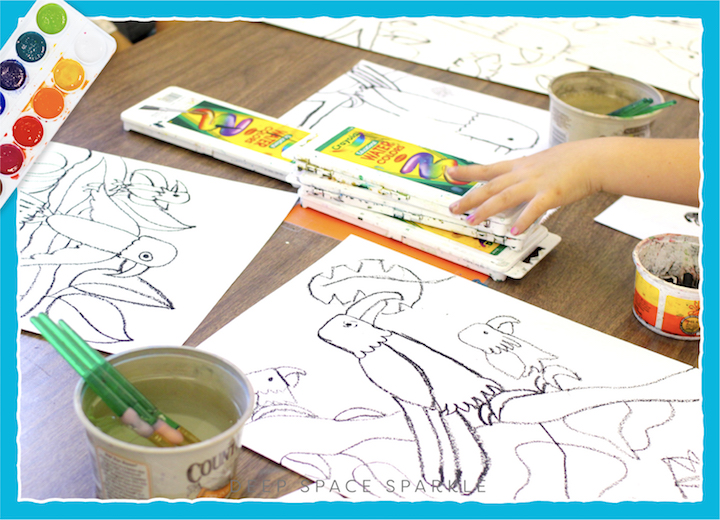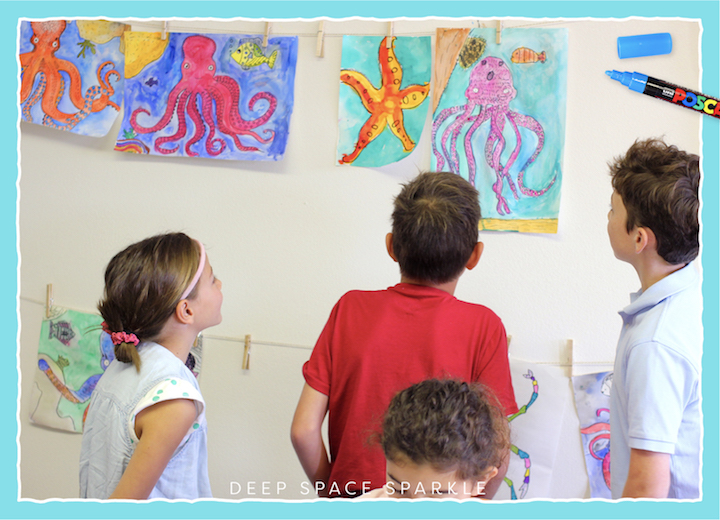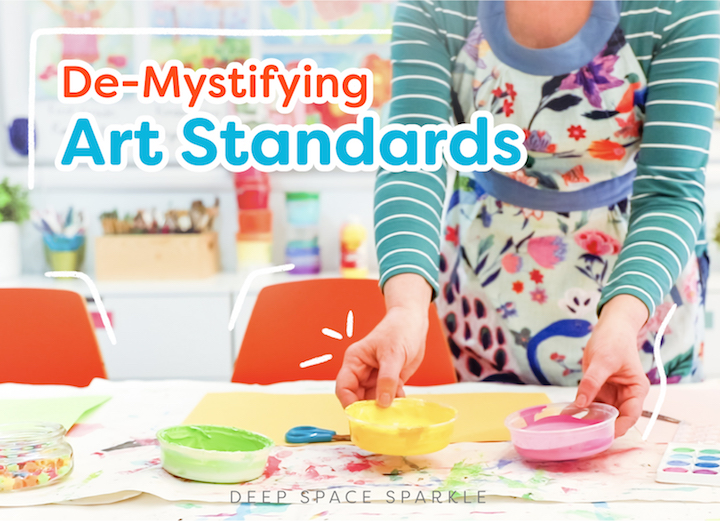There are few words that cause art teachers more stress than the word “standards”. Okay, maybe after the past year, “virtual” and “hybrid” might be up there, too – but standards are a perennial stressor; they seem at once both overwhelming and confusing, filled with language that make them almost a puzzle to decode.
Can’t we just immerse our students in the beauty of the creative process and call it a day?
Not if you’re an art educator and are required to cover specific standards. Though this may cause you to groan, once you understand the purpose of the standards, you’ll probably feel a lot less opposed to using them as your guide.
One of my art supervisors had an outlook that always helped keep my teaching in perspective. She often reminded me that we’re not teaching students to be the next Van Gogh. We’re teaching them to value art; to be able to appreciate it, understand it, as well as being able to express themselves through it.
Doesn’t that just put it into perspective?
That’s exactly what the standards ensure that students are exposed to; a well-rounded art education. Because in reality, art-making is just one component of teaching art.
Students need to be talking about art, looking at others’ art and exploring how art influences and is influenced by their culture as well as others’.
The National Core Arts Standards, which is what we use at Deep Space Sparkle to craft out lessons for the Sparklers Club (and is the basis for ost state standards here in the United States) breaks down the visual arts standards into four different categories; creating, presenting, responding and connection.
Here is a quick explanation of each category as well as some things you can implement in your classroom today to satisfy each category:
CREATING
This is the art-making process; it involves investigating ideas, planning your artwork, creating the artwork using artistic principles and reflecting on and refining artwork.
Creating is probably the category where you’re targeting the most standards without realizing it, solely because your students are creating artwork and thinking about it. But there are always ways to deepen their thinking.
Activities to teach Creating:
– Allow time for reflection and refining. Students might not do this naturally, they will need to be prompted to stop and examine their artwork to see if anything can be improved or better aligned to their purpose.
– Use art vocabulary words whenever possible and encourage students to do so as well.
– Give students the time and space to generate their own ideas for a piece of artwork, based on their experience or imagination.

PRESENTING
This category is all about how artwork is shared with others; selecting which piece to display, planning where and how it will be displayed and understanding why artwork might be shared in different places, like a museum or gallery.
Typically this one is the hardest to wrap your head around if you’re teaching elementary art or younger students. We tend to give students control of making the art, but once it’s made, teachers take over, selecting work for art shows and creating the displays. But with a few tweaks and conversations, you can be well on your way to fulfilling this category.
Activities to teach Presenting:
– Allow students to choose their own artwork for an art show or display. Have them write an artist statement about the work and why they hose it.
– Tour virtual museums or galleries with your students. Google Arts & Culture has lots to choose from, just preview to check for appropriateness first.
Talk to students about where they’ve seen artwork in their lives. Ask them how they are similar and different to museums and galleries and why?

RESPONDING
This is what we might typically think of art criticism, or talking about art; interpreting the meaning or purpose of a piece of art, evaluating artworks and analyzing the subject matter, materials and art concepts used.
The great news about this standard is that kids love to talk!
Give them the opportunity to talk about artwork in your classroom, and you’ll be pleasantly surprised with what they come up with. Just be sure to give them a prompt to help guide their discussion.
Activities to teach Responding:
– Regularly introduce talking about artwork into your classroom routine. This can be a great quick opening activity; one minute to examine the artwork and a simple prompt as they enter, then one minute to turn and talk about it with a neighbor.
– Give students a chance to critique their own, as well as others’ artwork after finishing. You can start off simple and painless by identifying one thing they like about the artwork and why they like it.
– Allow early finishers to create a story about their own artwork, or an artwork by someone else. Ask them to use examples from the artwork to support their story.

CONNECTING
This is the thought process behind the art; connection the artwork to personal or imagined experiences, relating the art to the time and place it was created.
Chances are if you teach your students about artwork from other places or cultures, you’re already teaching this one without realizing it.
Activities to teach Connecting:
– Allow students to create artwork that aligns with their own personal experiences. These types of lessons work anytime of the year, but are wonderful ways to begin the year to get to know your students/
– Take the time to investigate the cultures or time periods that you are introducing to your students and present them with multi-faceted information. Or if they are old enough, have them do some research on their own. Ask them to compare and contrast that culture or time period to their own culture or community.
– Have students think about and discuss why people make art and why they make the specific type of art. What from their culture or surroundings influence them?

Still feeling overwhelmed?
I hope not, but if you are here’s the good news: you don’t have to teach each of these categories every single day. The standards are meant to be taught throughout the course of the entire year; weave them in throughout your instruction wherever they fit in. I think you’;; be surprised how easily some of them align with and complement what you are already doing.
We’ve gathered together a handy checklist of the National Core Arts Standards for grades K-8 that you can use to keep track of your journey through teaching the visual arts standards throughout the year.
Download it here.
If you’d like more support and activities that align with visual art standards, The Sparklers Club has you covered. We supply the lessons and activities that align with the standards and you supply your own special teacher sparkle.
Jump on our waitlist now to be notified of our next enrollment period.













So very helpful, and thank you for explaining all these facets of standards that I did not really understand.
I am unable to access the free download here? please help, I am a member